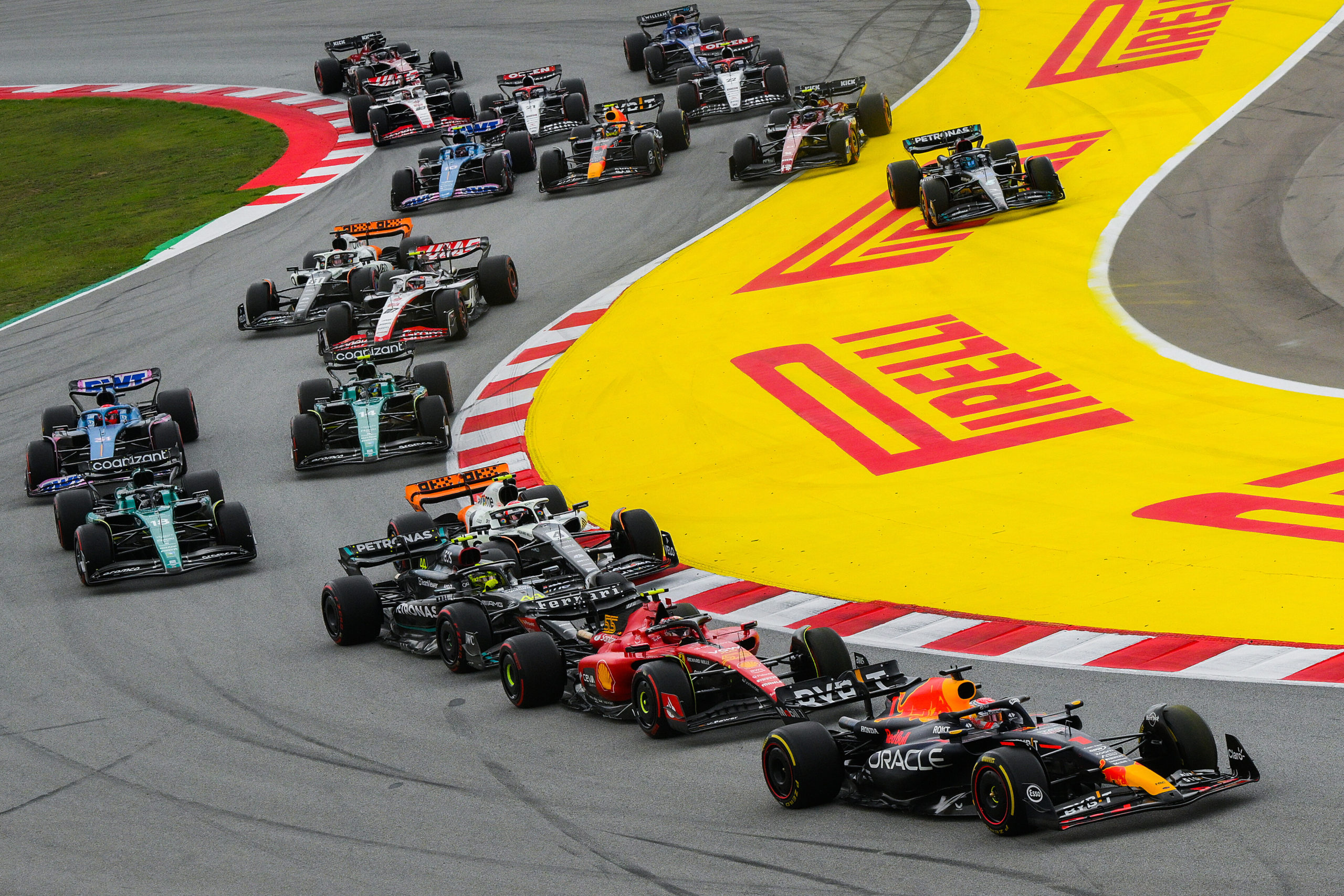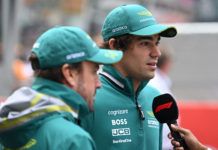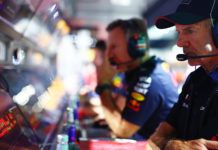Drive to Survive producer James Gay-Rees goes in-depth about the success of the Netflix show and how he goes about the F1 business.
Ever since Liberty Media took over F1 and eventually started planning things which generated mixed response, one of its decisions with a Netflix show has been instrumental in generating mass audience of the sport especially from the USA.
Granted that a lot of the newcomers aren’t in sync with the sport fully always but in a subjective situation, it is hard to maintain a balance. With the advent of the social media, the opinions are polarised naturally which creates a set mindset about things.
The followers of the sport from pre-Netflix era feel undone by the new ones, but for Liberty Media, the increase in numbers is growth of the sport and income too. Dramatisation of things has been a huge debate among the viewers of Drive to Survive.
As the seasons have progressed, not just the F1 fans but drivers and team bosses have shared opinions about pushing narratives which is usually not the truth. There has been requests of toning down where the last season was told to be better than the previous.
For one of the Drive to Survive producers Gay-Rees, it is impossible to please everyone as is with things in the creative field. And he is open to admit that he is not catering to the die-hard fans, nor he is looking at the novice category but somewhere in between.
It is a tough act to balance but he is pleased with how it has come about with the success of the show speaking for itself. It has captured a wide ranging audience of different demographic, even though a good chunk is towards the younger lot.
The success has an impact on the F1 drivers and teams too as despite the dramatic scenes, they are agreeing to feature on it even though they have had history of pulling out. They sense the marketing bonus and the Drive to Survive strike a good repo too.
Gay-Rees notes how the experienced Drive to Survive crew handle things and build a relationship with the F1 teams during their stay. They are not intrusive as well, giving them privacy. His memorable moment remains that of Romain Grosjean’s escape.
The opening act with Mattia Binotto and Guenther Steiner in Season 5 is also a highlight and shows a different view of the F1 team bosses. It is this idea with which they are moving on in Season 6, where they are trying something which they hope clicks.
Here’s James Gay-Rees when speaking to F1 website about Drive to Survive –
Success of Drive to Survive –
Gay-Rees: “Genuinely, we are enormously proud to be a part of it. There’s also a lot of satisfaction at being first with these things, and I think that it kind of does feel like the first main access show – certainly out of the UK anyway – that has had this profound effect. We’ve all had the statistics about the changing, younger demographic, and it’s tough out there for anybody, for any big organisation, to hold its ground given the amount of choices that are out there for the consumer.
“Bringing such a big new audience to a sport – which obviously was deserved, it just needed somebody to open it up – is massively satisfying. The fact that it wasn’t a fluke, the fact that it’s grown. It’s a real honour and we love it. It’s a very difficult show to make, but we love the process, we love the world. Long may it continue.”
Balancing different types of F1 lovers –
Gay-Rees: “I’m not a complete Formula 1 novice, but I’m also by no means a die-hard fan – I’m a sports fan in general. I think it’s such a difficult process, the creative process, to try and make something that people watch. But you can’t engineer it, you’ve just got to go with your instincts. I’m quite heavily involved in the edit, as is Paul, as are a lot of people, but I just go with what I think is the right story to tell, and I can’t really worry about what the die-hard fan to the novice are thinking, because you can’t keep everybody happy – it’s impossible.
“We definitely try to differentiate ourselves obviously from the broadcast. They do that, so there’s no point going into those areas, which the die-hard fans love, about undercuts and all that kind of stuff, do you know what I mean? We don’t really have the time to explain those things and it’s done well already – it’s a different product. When you’re dealing with 35, 40-minute episodes, you’re painting with quite a big brush, so you’ve just got to kind of register fundamental, emotional arcs that hopefully a lot of people can relate to.”
Driver involvements, impact –
Gay-Rees: “I think the younger drivers kind of get it more, because they can see the uplift in it. But even Fernando Alonso is sort of coming into his own as this kind of cartoon villain in some ways. The fact that he’s like, ‘You need heroes and you need anti-heroes, and I guess I’m the bad guy.’ We all love that about him and he’s kicking arse. I’m not sure everybody wants a camera in their face 24 hours a day, I totally appreciate that. But I think it’s pretty hard to not be able to recognise the impact of the show on the sport. Let’s be honest, it’s been pretty transformative. I’m not saying it’s entirely down to the show, but it’s definitely had a large part to do with finding that new audience.
“That was the point of the exercise in the first place, to open up the sport to a wider audience, and it’s been very successful in doing that. Obviously that translates into value in lots of different ways for the sport, for teams, and that’s how it should be – that’s the world we live in and that’s the market. I think the teams understand that and… they buy into the process. It’s never completely black and white, it’s not like they give us carte blanche to do whatever we want whenever we want to do it, but they do buy into the process enough to allow us make the show – that’s the bottom line.”
Maintaining privacy, relationship –
Gay-Rees: “When it’s their turn, the teams kind of brace themselves, take a deep breath and go, ‘Okay, what do you want to do?’, and we ask them, ‘Okay, well, what do you want to say?’ Everybody’s got a cut-off point. Our teams have been doing it for long enough now, they know when it’s appropriate to turn the camera off or put the camera down. But obviously your instinct is to try and get as much as you can within respectful parameters. It sort of depends on the rhythms and the flows in the room at the time, what’s going down, reading the room. Sometimes it can feel really awkward but actually you can hang in there.
“Sometimes it’s really awkward and you’ve just got to turn around and get out of there, so common sense sort of prevails. There are very few instances where people pick up the phone to complain and say, ‘What the hell was all that about?’ Truthfully, we get a lot of people saying, ‘You filmed a lot with us last year and you didn’t use very much of it!’ These shows have an unbelievable high ratio of shot footage to what ends up in the edit. We shoot 20, 30, 40 times too much, because you have to. The problem is sometimes you try something in the edit and it just doesn’t work and we just can’t use it. That happens a lot and that’s just the nature of the beast.”
Key moments, Season 5 opening –
Gay-Rees: “I mean, there are so many, but I do think that that whole Grosjean episode, ‘Man on Fire’, was pretty remarkable. Obviously it was an insane crash, but really, seeing him walk back into that garage after what he’d been through. We’ve never done that type of interview before where it was him and his wife, and that was pretty authentic emotionally – I think I’m getting goosebumps just thinking about it now! It was a privilege to tell that story; he’s a good dude and what he went through was extraordinary. To see him come out of it, obviously the fact that he survived was the most important thing, but to be able to tell that story, and just the sense of humour he had about it, his wife who obviously was shaken to her core by the whole experience.
That, for me, was pretty memorable. And then Season 5, I mean, who saw that coming [between Steiner and Binotto]? It was such a fresh way to open the series, it was so tongue-in-cheek, but it was really likeable and grabbed the audience, I think, in a really fresh way. Obviously Guenther’s a much-loved character and Mattia’s a good dude. That was a lovely sort of off-the-cuff way to get things going. I think things like that are really engaging and kind of not what you necessarily expect.”
Set new narratives, Season 6 progress –
Gay-Rees: “There’s the macro and the micro narratives, basically, trying to coexist. But we’ve got a few thoughts about this year, how we might make it feel more as one – I can’t reveal that yet. Some of the Netflix executives were over recently and we had a really good brainstorming session in their office and had a bit of a lightbulb moment about how to make the series feel different from the other series. It has lot of the same DNA, because it’s F1, [with] a lot of the same drivers… Obviously there are new drivers this year. But that was an exciting idea we had and we’ll see if we can land it – it would make sense if we could pull it off.
“We also try to get the crystal ball out, try to imagine where the storylines are going to go. It’s like Aston Martin, who could have seen this popping this year? But where’s it going to go now? Are Lance and Fernando going to stay best buddies, or is it going to get a bit tasty? It’s the sort of questions that people around F1 are asking themselves. We have no idea: it could be A, B or C, and you’ve got to try to plan accordingly and then work out how to tell that. That’s your narrative, but then what point of view can you use to try and tell that story differently? Again, we don’t get a lot of time with [the drivers], so it’s not always that easy to reinvent the wheel [season by season], but that’s the ambition each time, to slightly shift the emphasis.”
Here’s auction for Emila Romagna
Here’s the decision from FIA on Guenther Steiner
Here’s Singapore with new lighting system
Here’s news on new F1 drama series
Here’s news on Canada’s forest fire



















